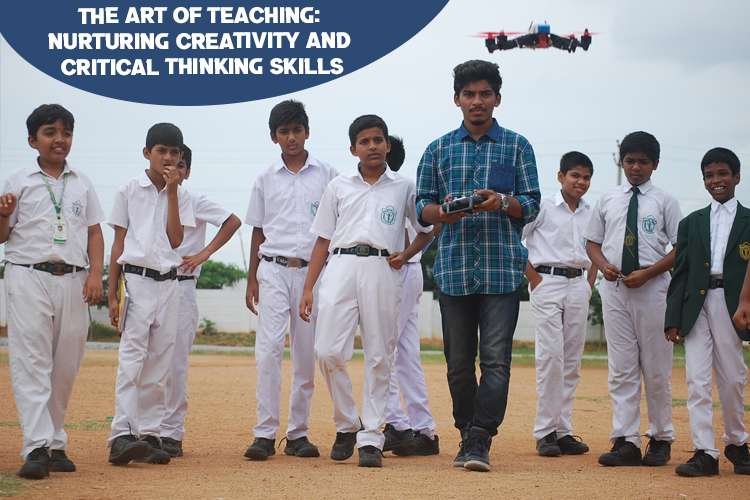As educators, we often hear about the importance of nurturing creativity and critical thinking skills in our students. But what does it really mean to teach artfully? How do we encourage our students to become more imaginative and thoughtful learners? We explore the art of teaching and how it can help us inspire the next generation of thinkers and creators.
1. Teaching with Empathy –
At the heart of teaching is the ability to connect with students on a human level. We must be able to understand their needs, fears, and aspirations. We need to see them as individuals, with unique talents and strengths. This requires empathy, patience, and a willingness to listen. It is not enough to simply deliver information; we must engage with our students and make learning a collaborative experience.
2. Nurturing Student Exploration –
One of the keys to nurturing creativity is to provide students with opportunities for exploration and experimentation. We need to create a safe and supportive environment where students can take risks and try out new ideas. This might involve incorporating more hands-on activities, such as art projects or group discussions. It might also mean encouraging students to question assumptions and challenge conventional wisdom. By giving students the freedom to explore and create, we can help them develop a sense of ownership over their learning and encourage them to take responsibility for their own growth.
3. Developing Critical Thinkers –
Critical thinking is another essential skill that can be nurtured through thoughtful teaching. At its core, critical thinking involves the ability to analyze, evaluate, and synthesize information. It requires students to question assumptions, consider alternative perspectives, and make evidence-based judgments. To teach critical thinking effectively, we need to provide students with opportunities to engage with complex ideas and to practice applying analytical skills to real-world problems. This might involve discussing current events, analyzing literature or historical documents, or conducting research projects. By challenging our students to think deeply and critically, we can help them develop the skills they need to succeed in the world beyond the classroom.
4. Lifelong Learners –
Teaching artfully is not always easy. It requires patience, perseverance, and a deep commitment to our students. We must be willing to adapt our methods to meet the needs of individual learners and to embrace new technologies and teaching tools. We must also be lifelong learners ourselves, constantly seeking out new knowledge and skills to bring to the classroom.
But despite the challenges, the art of teaching is one of the most rewarding professions there is. To see our students grow and develop into confident, creative, and critical thinkers is truly a joy. By nurturing the skills that will help them succeed in life, we are helping to shape the future of our communities and our world.
The art of teaching is about much more than simply imparting knowledge. By embracing the art of teaching, we can inspire the next generation of thinkers and creators, and help build a brighter future for us all. Teachers, after parents, are perhaps the most influential adults to be around kids, for a significant and impressionable period in their lives.


